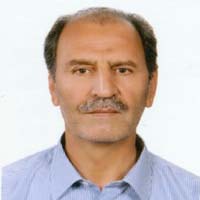Investigating the Effect of Biocrusts on increasing the soil's organic acids and absorbable iron in desert soils
The soil's biological crusts increase soil's organic matter, especially in arid and semi-arid regions, performing a special function in the global carbon cycle. Organic soil carbon, which is a mixture of various components, including organic acids, is an important indicator of soil quality. Organic acids increase the solubility of low-soluble nutrients, including soil iron. Therefore, this study attempted to investigate the effect of biological shells in increasing soil organic acids and their participation in iron uptake.
The map of biological soil crusts' distribution in the Sejzi plain was prepared, and soil was sampled under cover of biological soil crusts from lichen-dominated areas. Then, soil's physicochemical properties, including pH, EC, Fe, OC%, CaCO3%, and soil texture, were measured. Next, the Pearson correlation coefficient was calculated to determine the relationship between soil parameters and biological soil crusts. The values of the soil's physicochemical parameters were classified into two classes (soils covered by biocrust and non-biocrust) via PCA (Principal Component Analysis) using Matlab 2013b software. Then, loading charts for the first, second, and third components were calculated at the confidence level of 67.51%, 21.73%, and 6.71%, respectively. Fourier-Transform Infrared spectroscopy was performed, and FTIR spectra were obtained for all collected soil samples to identify the existence of an organic acid agent in the soil.
In the study area, 32 specimens of terrestrial lichens were collected from the Sejzi desert, most of which had been classified as cyanolichens whose photobiont part was cyanobacteria.The Pearson correlation coefficient between the percentage of organic matter and the coating of biological soil crusts was reported to be 0.653, indicating the significance of biological soil crusts in increasing soil organic carbon. Also, the results of the t-Student test showed that the amounts of absorbable iron in biocrust-covered and biocrust-free soils were significantly different.The classification of the relevant parameters via the PCA method revealed that in the Sejzi plain, soil salinity with 67.51% confidence, and at 21.73% level, soil texture and lime percentage were among the most important limiting factors in the establishment of biological soil crusts.Based on FTIR curves, Citric acid and oxalic acid were read from 1400 to 1600 (cm-1) and 1700 to 1800 (cm-1), respectively.
Deserts, arid, and semi-arid ecosystems contain very small amounts of organic matter, and, thus, they are exposed to the destructive effects of physical and chemical agents. Therefore, biocrusts, which play a very influential role in increasing the soil's organic compounds, improve the properties of desertified soils and enhance the desert's health. Moreover, secreting organic acids that form part of the whole soil's organic matter, biological soil crusts act like plant roots and facilitate chemical reactions in arid and semi-arid soils that are considered poor in terms of fertility. According to the study's findings, calcium carbonate, which increases soil alkalinity and affects the establishment of biological soil crusts, was found to be a limiting factor in carbon sequestration in the Sejzi plain. In other words, with an increase in calcium carbonate, the carbon sequestration and the amount of soil's organic carbon decreased.On the other hand, increased pH in the soil reduces the efficiency of organic acids such as citrate and oxalate, and as a result, the plants' absorption of the soil's micronutrients, including the iron, was reduced, and the growth of aerial parts and roots of the plant was disrupted.Furthermore, it was found that the probability of the formation of the lichen-dominated biological crust is 21.73% in sandy and silty soils, which contain more sand and silt than the clay soils. Also, in the Sejzi plain, fewer biocrusts are established incalcareoussoils. Moreover, in deserts, biocrusts increase organic carbon and thus perform different functions compared to other regions. However, they do not increase aggregate soil stability by increasing calcium carbonate. It should be noted that most of the Sejzi desert's biocrusts produce organic matter and increase soil's organic carbon, and a few of them are of calcium carbonate-producing types. Finally, it could be argued that biological soil crusts significantly increased iron absorption, which is considered as one of the most important micronutrients in the soil, by increasing the organic matter, which is among the categories found in the soil's organic matter. An increase in iron absorption was especially significant in the Sejzi plain's soils with high alkalinity (pH 7.5), limiting micronutrients dissolution and subsequently disrupting the establishment of vegetation.
- حق عضویت دریافتی صرف حمایت از نشریات عضو و نگهداری، تکمیل و توسعه مگیران میشود.
- پرداخت حق اشتراک و دانلود مقالات اجازه بازنشر آن در سایر رسانههای چاپی و دیجیتال را به کاربر نمیدهد.




